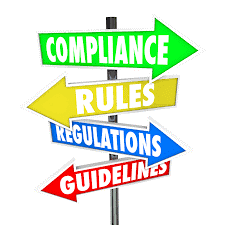 The U.S. Department of Energy began regulating Consumer Battery Chargers that are manufactured and offered for sale in June 13th, 2018.
The U.S. Department of Energy began regulating Consumer Battery Chargers that are manufactured and offered for sale in June 13th, 2018.
Products like Laptops, tablets, Power tools, Headphones and speakers fall into the definition of a regulated products that require testing and certification in the DoE CCMS database.
DoE CCMS database open for Product Certification and registration. That meant that all the products and devices that has battery chargers inside the device must be registered in the database.
Products that require approval from Federal Food and Drugs Administration as a life supporting device are exempt from the rule. (section 513 of the Federal Food, Drug, and Cosmetic Act (21 U.S.C. 360(c)).
Battery Chargers must be tested for energy consumption specified at: 10 CFR 430, Subpart B, Appendix Y.
The Department of Energy has established regulations on certification, compliance, and enforcement in the CFR at 10 CFR 429. These regulations cover statistical sampling plans, certification reports, certified ratings, record retention, and enforcement.
Currently DoE has no requirement for a battery charger compliance mark. Compliance is ensured by certifying models to the DoE CCMS database.
Why there are new regulations? Small devices, big savings! The DOE’s new standards, released in May and formally published in the Federal Register on June 13, are designed to make chargers more efficient by just over 10 percent on average, saving 500 million kilowatt-hours annually, enough electricity to power all the households in a city of 100,000 people.
However, this is just the tip of the iceberg: national savings are roughly 30 times as high, or 18 billion kilowatt-hours, when accounting for California’s existing battery charger standards that have been in effect since 2013 and whose effects were felt far beyond the Golden State’s borders. In fact, DOE estimates that 95 percent of all products sold on the U.S. market now comply with California requirements. State and federal standards combined will save enough electricity annually as the output of six large (500-megawatt) coal-fired power plants.
DOE’s new standards mostly mirror California’s and extend them to the rest of the country, ensuring all products sold in America are designed to waste less energy, and locking-in the financial, health, and environmental benefits driven by the original state standards. The new federal standards mirror California’s for most products, and even improve them for a few product types such as electric toothbrushes and golf cars.
Until the DOE’s standards, there had been only two states, California and Oregon, that had acted on concerns about the energy wasted to keep mobile product batteries charged, such as when continuing to pump current into fully charged batteries for lack of charge control, or when charge control circuits draw much higher vampire loads than necessary.
While some of the smaller individual devices, like cordless phones and cell phones, require only a small amount of electricity to achieve a full charge, the fact that there are more than two billion such devices nationwide—between 15 and 20 per household—being powered up daily constitutes a substantial drain on the grid.
Why is the DoE regulation important to your business? If you manufacture or sell battery chargers or products with embedded battery charger systems, your products must be compliant with the DoE’s Energy Conservation Program to be sold or distributed in the United States. Failure to comply with the new law will result in products that cannot be legally sold in the U.S.
https://www.energy.gov/sites/prod/files/2016/05/f31/Battery%20Chargers%20Final%20Rule.pdf
